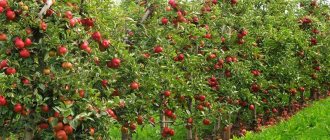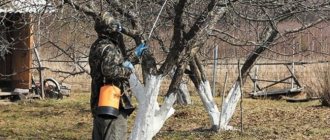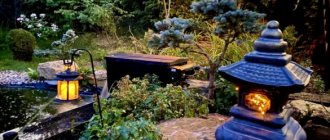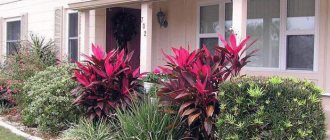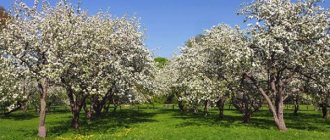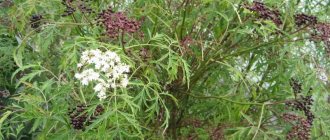Dwarf trees for the garden are very popular among owners of small garden plots. They are distinguished by their miniature, neat shapes and original appearance, which will fit perfectly into any landscape design and become an interesting decoration of the site. Despite their miniature size, dwarf trees delight gardeners with high yields with minimal care.
Dwarf trees for the garden - advantages and disadvantages
Miniature trees have long won the love of gardeners, because they give an original and impressive look to even a small area without taking up much space.
The main advantages of dwarf trees for the garden:
- Earlier start of fruiting - if standard size trees begin to bear fruit no earlier than 4-7 years after planting, then dwarf trees bear fruit within 2 years.
- Ease of care - dwarf trees have a small, neat, rounded crown that does not require additional pruning. Unlike vigorous trees, reaching 8-10 m in height, human height is quite enough to care for miniature specimens.
- Ease of harvesting - the height of dwarf fruit trees usually does not exceed 1.5-2.5 m, so harvesting a ripe crop will not cause any difficulties.
- Good survival rate - seedlings of dwarf trees are usually characterized by rapid rooting and uniform growth, so even a novice gardener can grow them.
- Harvest – dwarf fruit trees produce an excellent harvest of large fruits, which are superior in size and taste to standard garden crops.
- Versatility of use - miniature trees can be planted singly, in groups, or used as “sealers” between ordinary tall trees. They can also be used for mixed plantings, placing several different varieties next to each other - this does not affect the quality and quantity of the future harvest.
But dwarf trees also have several disadvantages. The gardener will have to spend more money on seedlings, because landscaping the area will require a large number of them.
Miniature varieties have a weak root system that often cannot withstand strong gusts of wind. Therefore, when forming a dwarf garden, you must take care of the supports.
How to grow a coffee tree at home
If growing a lemon or orange from a seed seems like a very banal thing to someone, you can try growing a coffee tree. True, there is one caveat here: the coffee beans that we pour in large quantities into the coffee machine are unlikely to be suitable. It is best to ask for a couple of brown-red unripe coffee fruits from those who already have such a tree growing.
To get to the unripe beans, you need to peel the coffee fruit and remove the pulp. Both halves of the grain can be used as planting material. They need to be washed with water under the tap, and then kept in a weak solution of potassium permanganate for half an hour. Then the seeds are planted in a container with drainage holes and loose soil to a depth of 1 cm.
The coffee tree is quite picky and prefers to grow in acidic soil. Therefore, the substrate for it is prepared from acidic peat, which is mixed in equal parts with humus, wood ash and sand. In order to increase humidity and at the same time add acidity to the soil, sphagnum moss is sometimes used, which is pre-crushed.
The container is placed in a place that is well illuminated by the sun, providing the future plant with a temperature of at least 20°C. Typically, pots with coffee tree sprouts are placed on windowsills on the sunny side and covered with a jar on top to create a greenhouse effect. But during prolonged heat, it is better to move them to a cooler place so that the plant is not exposed to direct sunlight.
When growing a coffee tree, you need to choose the right pot. A coffee tree will, of course, grow in a small pot, but it is unlikely to bloom.
The coffee tree has a capricious nature and requires replacing the soil every year until it is five years old. Before you start replanting, add fertilizer to the soil - 20 g of bone meal or horn shavings per 1 kg of soil.
After five years, the tree's need for annual soil replacement decreases, and you can simply relax and enjoy its magnificent view.
Popular varieties of dwarf apple trees
Dwarf apple and pear trees are the most popular and widespread fruit trees, with which you can effectively decorate a miniature garden and get a high yield of fruits every year.
An important advantage of mini-apple trees is ease and ease of care.:
- Melba is one of the most famous summer super-early varieties, producing a harvest already in mid-summer. The tree begins to bear fruit in the third year after planting the seedling. Melba is famous for its unusual, pleasant vanilla-caramel taste of the fruit.
- Candy is a high-yielding variety, the height of which does not exceed 1.8 m. The fruits ripen 2-3 years after planting; from each tree you can collect up to 30 kg of greenish-yellow apples weighing 130-200 g.
- Wonderful is a miniature tree up to 1.4-1.6 m high, with excellent frost resistance and high yield. Large fruits with yellowish skin and red “barrels” have a sweet taste with notes of honey.
- Suislepskoe is an early summer variety with high yield. The crown is dense, neat and spherical, the fruits are straw-yellow in color. Their weight usually does not exceed 120-160 g.
- Autumn striped is a mid-season variety of dwarf apple trees, producing large golden-yellow fruits weighing 180-200 g. The advantage of the variety is long-term storage of the crop.
Popular dwarf trees for the garden include the Zhigulevskoe variety. The tree, 2-2.5 m high, has a round or wide-pyramidal crown that does not need pruning. Bright red apples ripen in the last days of September and are distinguished by excellent taste and good keeping quality.
Famous varieties of miniature pears
When creating a dwarf garden, many gardeners pay attention to miniature pears. These are neat trees with high decorative value and good fruiting. An important advantage of dwarf pears is their excellent resistance to weather changes and common diseases of fruit crops.
Dwarf pear varieties:
- Parisiana is a French variety that is famous for its unpretentiousness in cultivation, resistance to frost and excellent honey taste with a slight sourness. Large greenish-yellow pears can be stored all winter without loss.
- Veles is an autumn variety, considered one of the best in the Moscow region and central Russia. Quickly adapts to any weather conditions, bringing a high yield of round greenish fruits weighing up to 180-220 g.
- Grand Champion is one of the most famous and high-yielding varieties of dwarf pears. The tree easily tolerates temperature changes and delights with a generous harvest of large fruits with tender and juicy pulp.
Popular types of dwarf pears include Bere Ardanpont or Ferdinant - one of the oldest French winter varieties. Large yellow fruits are removed from the tree in mid-October, after which they are stored for 4-5 months. Pears have an interesting bell shape and juicy, buttery flesh with a honey taste.
Fast growing shrubs for hedges
This phrase may sound somewhat hackneyed, but you can’t do without a fast-growing shrub when creating a hedge. From it you can quickly “grow” a very dense, impenetrable fence of any height.
Free growing hedges
If the fence of plants will not be trimmed, you can select highly decorative plants. Barberry (Amur and ordinary) is a fruit-bearing shrub with berries rich in vitamins K and C. Thunberg barberry has a particularly attractive appearance with graceful, bowing branches, completely strewn with small burgundy-red leaves.
A snowberry garden is suitable for zoning the site. Its fruits in the form of white balls remain on thin branches almost all winter. It tolerates shearing easily and is unpretentious in terms of soil composition.
Advice. To fence a plot of land from the street side, thorny plants, for example, thorns and rose hips, are suitable. True, rosehip has a “habit” of growing uncontrollably, so it should immediately be allocated an area, fencing it with a border.
Molded hedges
For a trimmed green hedge, densely leafed, abundantly branching shrubs are selected, that is, those with a dense dense crown. The advantage of a molded fence is its compactness: it occupies a strictly limited space and does not block the view. Common privet, hawthorn, cotoneaster, and bush willow grow quickly and easily tolerate pruning.
Cotoneaster brilliant
Conifers are used in free-growing and shaped hedges. Thuja occidentalis grows quickly. The most unpretentious variety is “Brabant”, the annual growth of which is up to 30 cm. You can also plant a hedge of western thuja Columna and Smaragd.
Thuja Columna
Norway spruce and prickly spruce are used to create impenetrable thorny fences, and Virginia juniper is used for zoning a site.
By planting a hedge, you can combine plants of different heights and foliage colors, creating a unique landscape. Fast-growing shrubs and conifers are excellent materials for this creative work.
In the end, I would like to say that trees, just like any living beings, need care and maintenance: pruning, proper soil, protection from diseases and pests. It is not enough to simply plant a seedling and forget about it. You can find care manuals on the Internet, as well as information about means of protection against diseases (fungicides) and pests (insecticides such as Coragen, KS Expert Garden and Confidor Extra).
dizlandshafta
The best varieties of dwarf plums
When forming a dwarf garden, you should pay attention to plums. Miniature trees will allow you to enjoy tasty and juicy fruits even in a tiny garden plot.
Popular types of plums:
- Blue Free is a frost-resistant dwarf variety intended for cultivation in regions with cold climates. It tolerates frosts down to -38°C and is resistant to chlorosis and root canker. The fruits are dark purple in color with black speckles and a waxy coating, with a pleasant sweet-sour taste.
- Chachakskaya is a late-ripening variety. The fruits ripen at the end of September, have an oval shape and a pleasant taste with a slight sourness.
- President - this variety easily tolerates even harsh winters. It is unpretentious to growing conditions and produces a good harvest even with minimal care. The fruits are greenish-yellow in color, with a sweet taste and subtle sour notes.
No less popular varieties of low-growing plums are Yellow self-fertile, Pamyati Timiryazev, Vengerka Pulkovskaya, Stanley and Anna Shpet. They tolerate sudden changes in weather, high or low humidity, and are resistant to disease.
Miniature apricots and peaches
Low-growing apricot varieties are self-fertile. They are used for growing in small areas where it is not possible to place a large number of tall trees. Dwarf apricots and peaches bear fruit every year, are very rarely affected by diseases and can withstand weather changes.
The best apricot varieties:
- Snegirek - the height of a miniature tree does not exceed 1.3-21.5 m. The variety is intended for regions with cold climates and tolerates severe frosts well, but reacts very poorly to lack of moisture. The fruits are small, up to 20 g, cream-colored with a red “blush” and tender, sweet pulp. Despite its dwarf size, the tree produces up to 12-15 kg of harvest.
- Black mouse is an original dwarf variety that attracts attention with purple-black fruits. The miniature tree can be grown both in the garden and in a large pot or tub.
- Chalychka is a high-yielding frost-resistant variety with a height of 1.4-1.6 m. It received its name due to the unusual shape of the fruits, which externally resemble cups. Apricots ripen in the first half of August and have a creamy-golden color. The fruits are small, but extremely sweet and juicy.
Among the dwarf peaches, the most popular are Capital's Anniversary, Honey, Golden Triumph, Steinberg and Gardener's Totem. The height of low-growing peaches does not exceed 1.5 m, while the fruits remain large in size - up to 300 g. The average yield of such varieties is 12-15 kg per tree.
Low-growing trees for landscaping are an ideal option for a small garden plot. Dwarf trees have gained popularity due to their combination of high decorativeness, ease of care and generous yield. They allow you to give your garden an original and spectacular look, fit harmoniously into any landscape design and make it more colorful.
Tall ornamental crops
The length of the chocolate vine can reach 10 meters, which allows it to be used as a hedge or gazebo. Purple flowers with a chocolate tint and five-fingered leaves make the plant unique. For the winter, the vine is removed from its supports and covered with spruce branches or leaves.
The well-known mountain ash decorates the site all year round. Its red or orange berries hang on the branches almost all winter. The height of the tree reaches 10-14 meters. The culture is unpretentious and resistant to diseases and harmful insects, and tolerates any climate well. Frost resistance increases with age. But young trees need to be covered for the winter.
Robinia is also called pseudoacacia. In nature, its height is about 25 m, but in the garden its height is only 5 meters. Fragrant white or pink moth-shaped flowers bloom in June. The crop is frost-resistant, unpretentious, and prefers loam soils.
This beautiful shrub is found in almost every area. Unpretentious, winter-hardy, with an incredible aroma, bush. It's lilac! To make it bloom faster, pour 2 buckets of water under the bush as the soil dries. Flowering begins in May. Snow-white or purple clusters of different shades fill the entire area with a sweet fragrance.
Bird cherry is considered an unpretentious plant. But you need to know that black currant pests (glassworm) overwinter on its bushes. This fact must be taken into account when choosing plants for the site. Fragrant bird cherry blossoms in May, and leaves and snow-white flowers bloom at the same time.
Chestnuts are tall and large trees. The tree is popular, although not everyone will plant a 30-meter plant in their garden. For garden plots, breeders have developed low varieties that do not grow higher than 3-4 meters.
